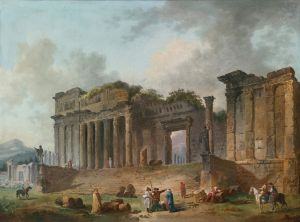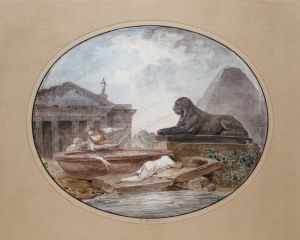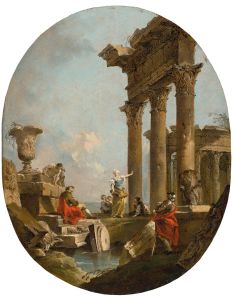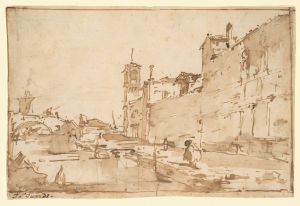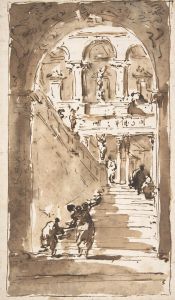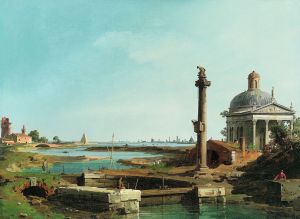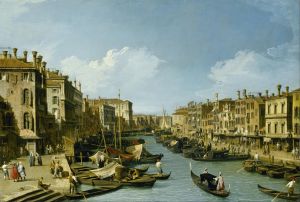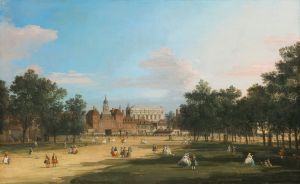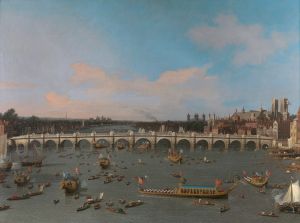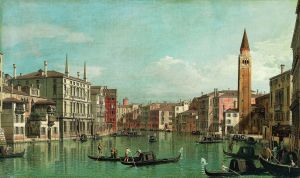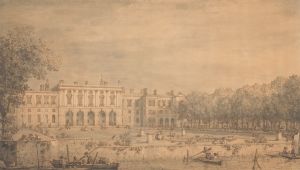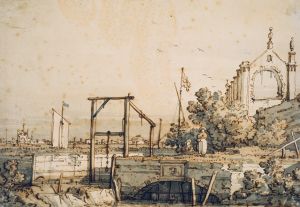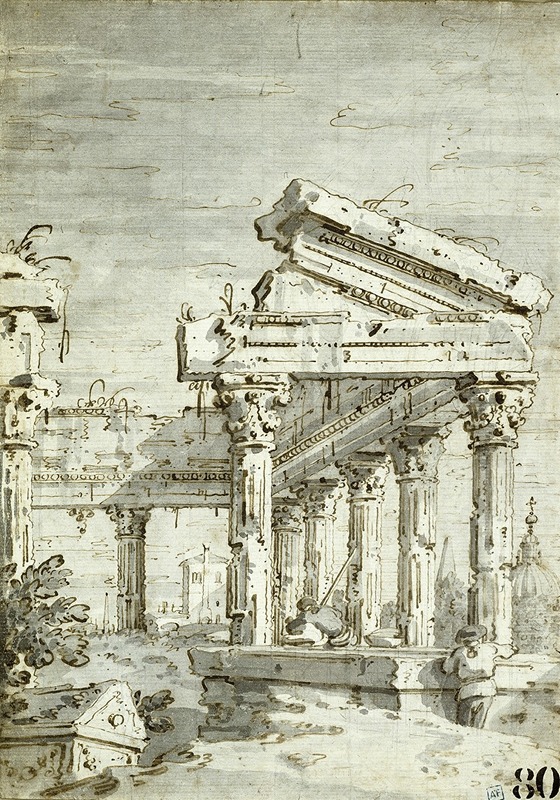
Capriccio; A Ruined Classical Temple
A hand-painted replica of Canaletto’s masterpiece Capriccio; A Ruined Classical Temple, meticulously crafted by professional artists to capture the true essence of the original. Each piece is created with museum-quality canvas and rare mineral pigments, carefully painted by experienced artists with delicate brushstrokes and rich, layered colors to perfectly recreate the texture of the original artwork. Unlike machine-printed reproductions, this hand-painted version brings the painting to life, infused with the artist’s emotions and skill in every stroke. Whether for personal collection or home decoration, it instantly elevates the artistic atmosphere of any space.
"Capriccio: A Ruined Classical Temple" is an oil painting by the renowned Italian artist Giovanni Antonio Canal, better known as Canaletto. Created in the 18th century, this artwork is a prime example of Canaletto's skill in the capriccio genre, which involves the imaginative combination of architectural elements and landscapes to create a fantastical scene.
Canaletto, born in Venice in 1697, was celebrated for his detailed and precise depictions of Venetian scenes. However, he also ventured into capricci, where he exercised greater creative freedom. "Capriccio: A Ruined Classical Temple" exemplifies this artistic exploration, blending real architectural features with imagined ruins to evoke a sense of nostalgia and romanticism.
The painting features a grand, yet dilapidated classical temple, surrounded by lush vegetation and set against a serene sky. The temple's columns and pediments are reminiscent of ancient Roman architecture, yet they are presented in a state of decay, suggesting the passage of time and the transience of human achievements. This theme of ruin and decay was popular during the 18th century, reflecting a fascination with the ancient world and its remnants.
In the foreground, figures are depicted engaging in various activities, adding a narrative element to the scene. These figures, often dressed in contemporary 18th-century attire, provide a contrast to the ancient ruins, bridging the past and present. Canaletto's attention to detail is evident in the meticulous rendering of the figures and the play of light and shadow across the architectural elements.
The painting is characterized by Canaletto's signature use of light and perspective, which lends a sense of depth and realism to the fantastical composition. His ability to capture the interplay of light and shadow enhances the three-dimensionality of the scene, drawing the viewer into the imagined world.
"Capriccio: A Ruined Classical Temple" reflects the broader cultural and artistic trends of the 18th century, particularly the Enlightenment's interest in classical antiquity and the Romantic movement's fascination with ruins and the sublime. Canaletto's work in this genre not only showcases his technical prowess but also his ability to evoke emotion and contemplation through the juxtaposition of reality and imagination.
This painting, like many of Canaletto's works, has been studied for its artistic merit and its reflection of the cultural zeitgeist of its time. While Canaletto is primarily known for his vedute, or detailed cityscapes, his capricci offer insight into his versatility as an artist and his engagement with the intellectual currents of his era.
Today, "Capriccio: A Ruined Classical Temple" is appreciated not only for its aesthetic qualities but also for its contribution to the capriccio tradition, which continues to inspire artists and captivate audiences with its blend of fantasy and reality.





